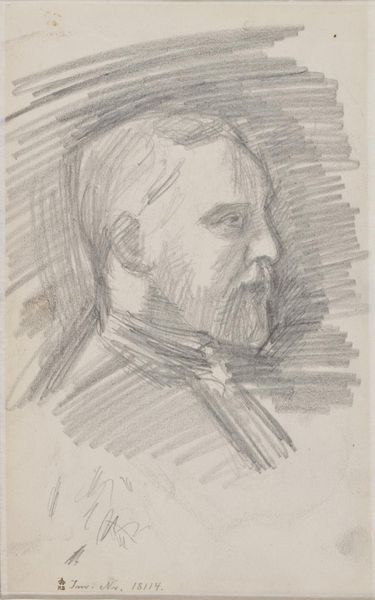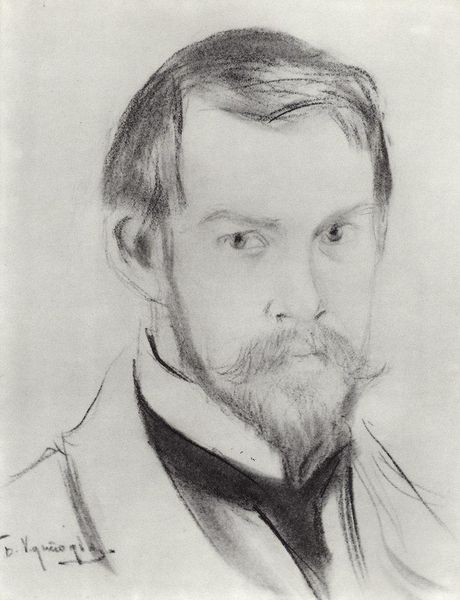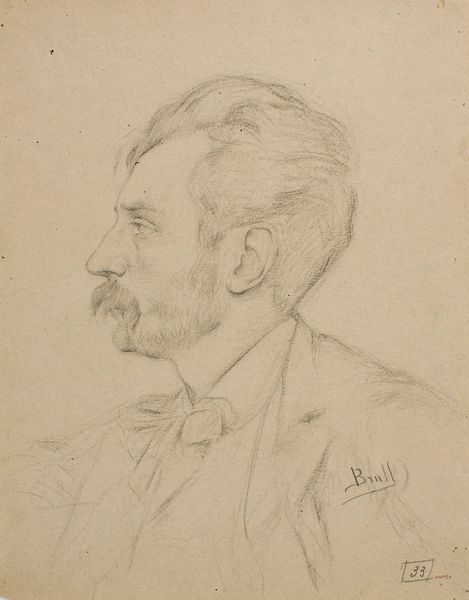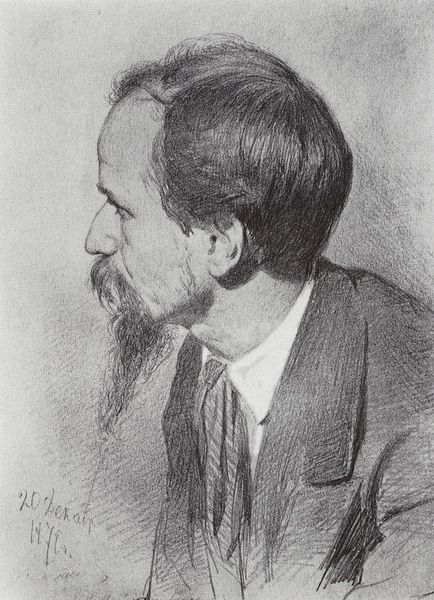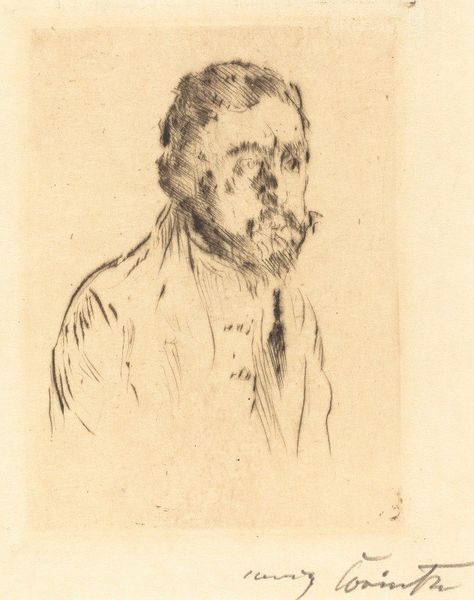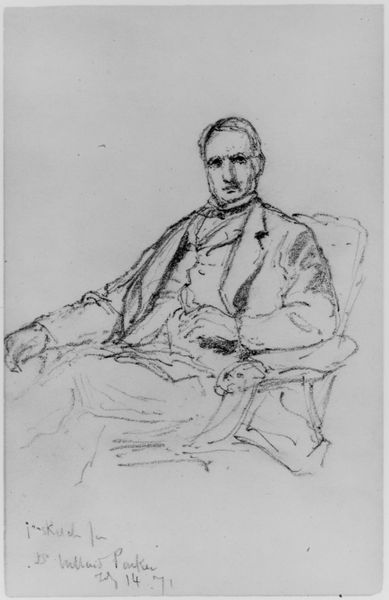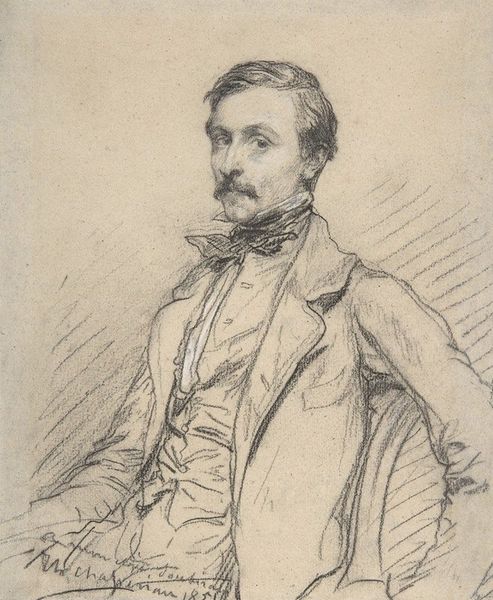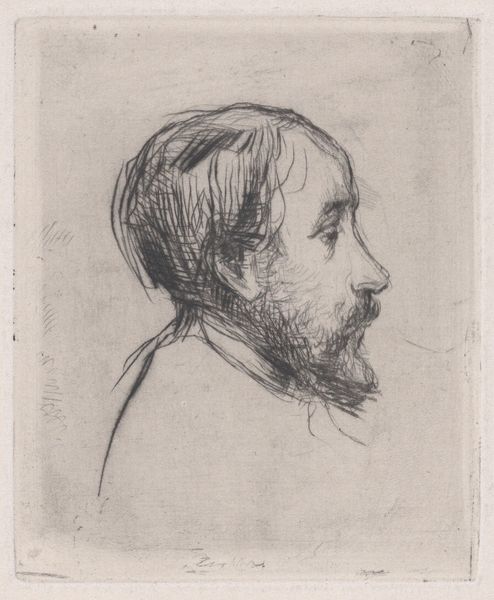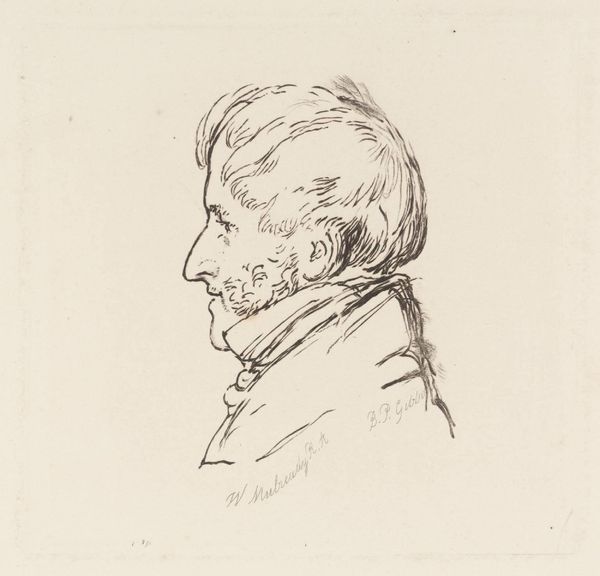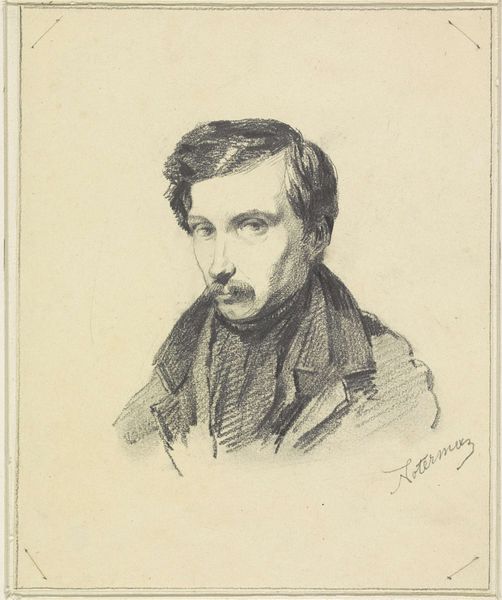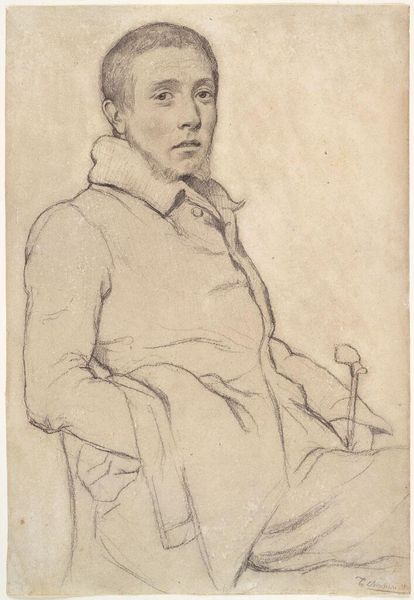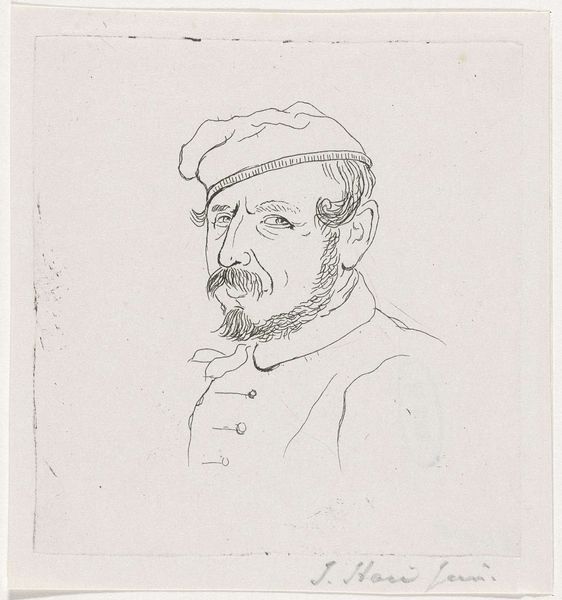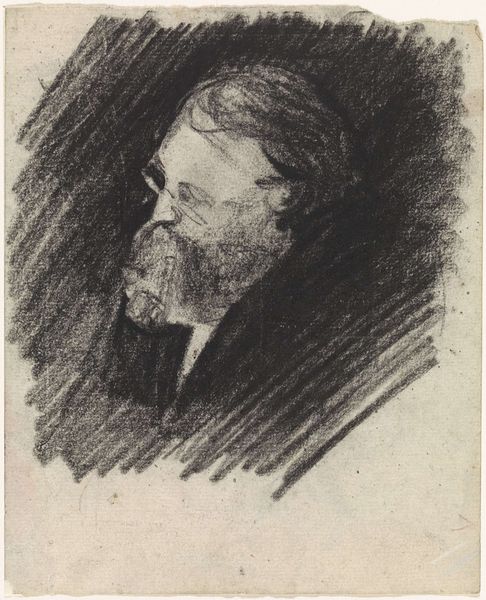
drawing, pencil
#
portrait
#
pencil drawn
#
drawing
#
charcoal drawing
#
pencil drawing
#
pencil
#
russian-avant-garde
#
portrait drawing
#
realism
Copyright: Public domain
Editor: This drawing is a portrait of Viktor Vasnetsov by Arkhyp Kuindzhi, rendered in pencil. There's an immediacy to the sketch, like we're catching a glimpse of Vasnetsov in a moment of reflection. How do you read this piece? Curator: I read it as more than a fleeting portrait. I see a negotiation of power and identity characteristic of the Russian Avant-Garde, especially when we consider the social and political context in which it was produced. Who was Vasnetsov in relation to Kuindzhi, and what did it mean to portray him in this style? Editor: So, it's not just about capturing a likeness? Curator: Precisely. Think about the Realist movement that preceded the Avant-Garde and the break from tradition it signified. Kuindzhi wasn't simply depicting Vasnetsov; he was participating in a broader cultural dialogue about the role of the artist and the representation of the individual within a rapidly changing society. Notice how the gaze meets yours head-on. What does this confrontation tell us? Editor: I suppose it suggests an agency, a self-awareness... Maybe even a challenge? Curator: Yes, a challenge to conventional portraiture and perhaps to societal norms. This work then becomes an active participant in shaping perceptions. It reflects and refracts, asking us to question whose stories are being told, and how. Editor: I see. So, viewing art as an active dialogue really changes the experience. Thanks! Curator: Indeed! And considering this portrait through lenses of gender, class, and race helps us understand the artist's broader project. Glad to have helped!
Comments
No comments
Be the first to comment and join the conversation on the ultimate creative platform.
